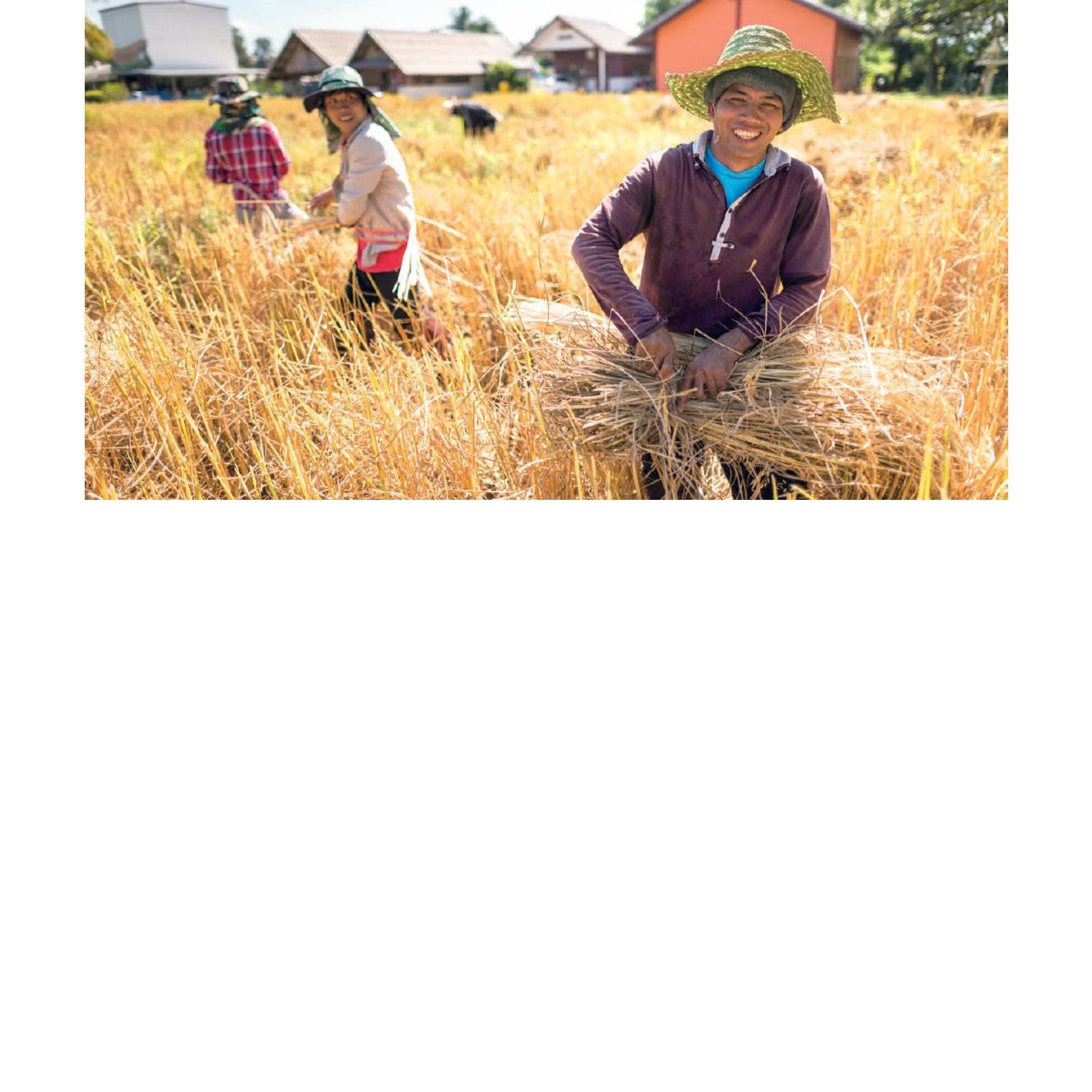

48
|
Culture Ways of Life and Wisdom
In the harvest time and after bringing all yields to their threshing floor, farmers will perform
Tham Khwan Kwao ceremony, seeking forgiveness from Mae Phosop again, as a way to make merit
and celebrate the rice harvest. People of the Central region call the ceremony Tham Khwan Lan
(rice threshing ceremony), while the Isan people call it Boon Koon Lan. In addition to creating the
morale and seeking forgiveness, through Tham Khwan Khao Ceremony, farmers express gratitude
to the rice, sanctity and nature. After the rice is completely threshed, it will be collected to the barn.
Before selling the rice, farmers must perform the ceremony of Perd Yung or Tak Yung (opening
a barn) to ask for permission to sell the rice as well.
Tham Khwan Khao tradition is not just a ritual for expressing gratitude to nature, but it is
also a humility to everything that supports life and existence. It also shows the benevolent spirit
and solidarity of the community members that they will combine efforts to help each other during
the rice harvest.
Although currently rice farming can be done several times a year, the Tham Khwan Khao
ceremony is only performed for in-season rice farming. However, with changes in farmers’
ways of life and farming methods affected by modern agriculture and technology, the present
Tham Khwan Khao ceremony may not performed in comprehensive process like in the past
or it is adapted to be more concise. But the belief in Mae Phosop remains with rice farmers in
some areas where they still rely on rainwater for rice plantations and organic agriculture. Some
communities perform Tham Khwan Khao ceremony together with the ritual of Pha Pa Khao Pheuk
(merit making for rice seeds), while some communities hold the Tham Khwan Khao ceremony
in conjunction with the temple’s annual event.
“
In the harvest
season, farmers of
each locality often
combine their efforts
for the harvest.
It creates unity,
solidarity,
appreciation
and pride of the
production together,
after the year-round
hard work.
”


















